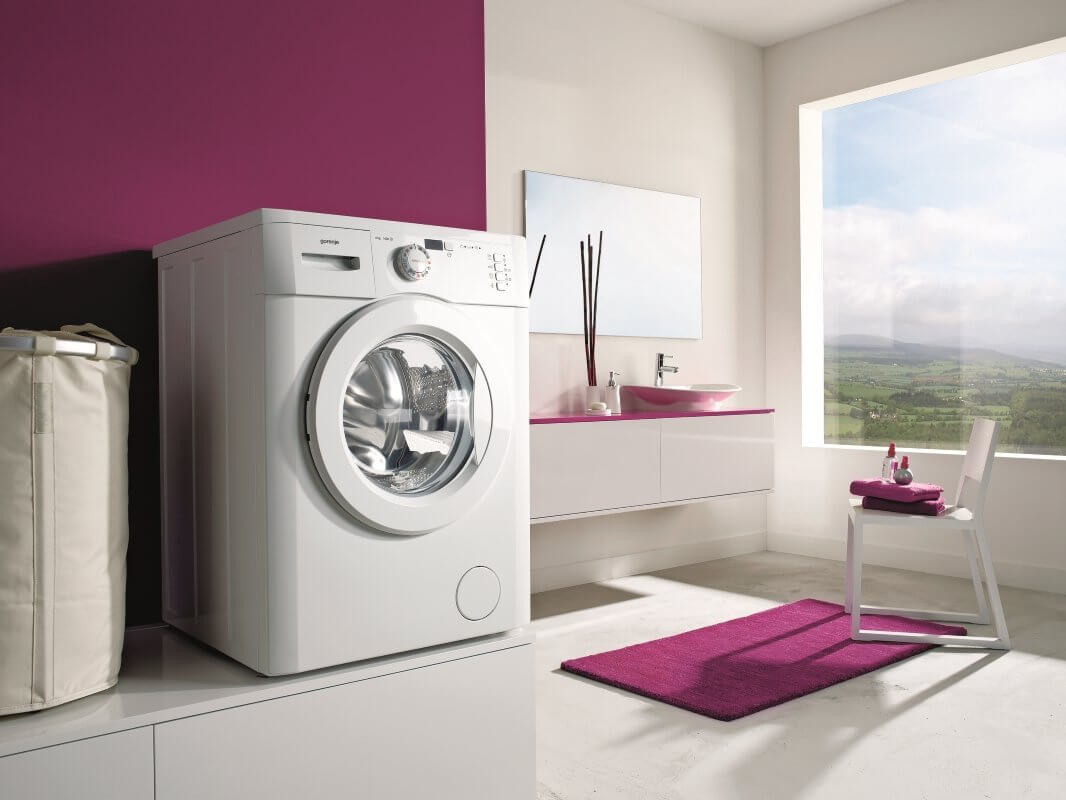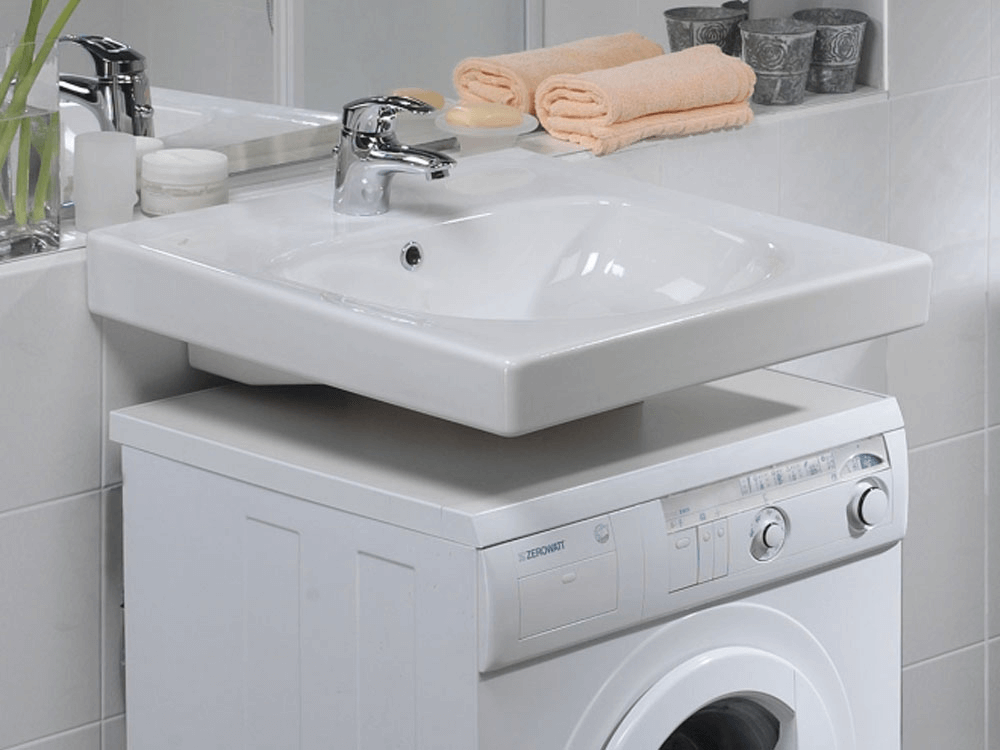The wiring of communications in apartments, even new ones, is rarely designed to connect a washing machine. Are the owners forced to solve this problem on their own by equipping the bathroom? Or the kitchen with additional communications. The machine is often placed in the bathroom, opposite the washbasin, less often in the kitchen. How to connect a washing machine in a typical apartment with standard plumbing?

Water
Depending on the place where the installation of the washing machine is planned, can cold water be supplied from the riser or pipelines that feed the washbasin faucet, kitchen sink? or a toilet bowl. There are several ways.
With the help of a three-way faucet from a hard (metal or plastic) piping to the washbasin. If the washbasin faucet is connected with a flexible hose, the tee with tap is simply inserted between the cold water pipe and the faucet hose. The water supply hose is connected to the side outlet of the tap. In the same way it is possible to connect the water from the cold water inlet pipe of the kitchen sink faucet. When the washing machine is installed against a wall adjacent to a toilet, water can be supplied from the toilet cistern connection. The valve is also installed between a rigid pipe and a flexible hose.Threaded connections that do not have rubber gaskets are sealed with fum tape, plumbing tow on oil paint, or sealant.
If the water supply to all appliances is carried out only with rigid pipes (this solution is typical for the old housing stock), a drainage system will have to be installed on the pipe.A hole is drilled in a metal pipe, and the drainage housing reliably compresses the pipe in this place. A standard tap is inserted into the drainage thread to connect the hose. You can also insert on the threads, or weld a tee into the cold water supply pipe, but it is much easier to mount the drainage system.
Sewerage
If there are problems connecting the drain hose to the sewer pipes, it is allowed to lower the hose into the bathroom or washbasin during washing. The main condition is to ensure its reliable fixation so that the hose does not fall to the floor when pouring water.
A more reliable way is to connect the drain hose directly to the sewer. The most convenient way to do this is through an additional drain of the siphon of the washbasin or sink. You will have to replace the standard siphon with a special one with an additional outlet. The drain hose is simply put on the fitting, it is not necessary to seal the joint. The siphon must be assembled exactly according to the instructions, not forgetting to insert a check valve that prevents dirty water from entering the machine.
You can connect the drain directly to the drain pipe under the washbasin, or the sink through an adapter by installing a tee under the siphon. The hose must be used with the U-bracket that is installed on it. The bracket provides the necessary bending of the hose, which prevents the penetration of unpleasant odors into the machine.It doesn't matter where the washing machine drain outlet is installed, but it is important to respect the height limit. For most washing machines, the drain connection should not be lower than 50 cm from the floor.
Electricity
A washing machine is a fairly powerful and potentially dangerous electrical appliance. If there is a ground wire in the apartment, it must be connected to a separate outlet to which the machine will be connected. The use of an extension cord is not allowed by the rules for operating devices.The best solution is to connect a separate outlet to the washing machine directly from the meter, through a residual current device (RCD), or a 16A circuit breaker. A three-core copper wire with a cross section of at least 3x1.5 mm2 should be used. A three-pole socket for a wet room must have a degree of moisture resistance of at least IP44, the wire must enter the socket or socket housing through a sealed sleeve.
If it is not possible to install a separate machine near the meter, you can use a portable 16 A RCD. It is a plug that can be installed instead of the standard one, in another version - an adapter.
Installing a washing machine under the sink
If there is no place to install the machine, a special washing machine under the sink will help out. True, you will have to sacrifice its volume: it will be much less than the standard one. The location of the siphon under a conventional washbasin does not allow you to install a machine under it. Therefore, it will have to be replaced with a special one. The depth (height) of the washbasin will be small, but the dimensions in terms of and installation height from the floor are standard.

Installation, first start
After connecting the communications, it is necessary to accurately align the machine vertically and ensure that the body does not stagger on its legs. Do not forget to unscrew the transport bolts. It is recommended to carry out a test wash without laundry, with a small amount of washing powder. If the washing machine is replaced with a new one with connection to existing communications, the first start is also best done without loading the drum.
Not only its correct operation and ease of use, but also the safety of people depends on how competently the connection of the washing machine is made. A technically literate person with engineering skills, free time and a minimum of tools can do the work on their own.In many cases, the right decision is to call a plumber and an electrician from the Housing Office. Especially if the house is old, the overhaul has not been done for a long time, the inlet cold water supply faucet is “hardened” and does not work. All the same, you will have to apply for turning off the water in the entire house or entrance.
